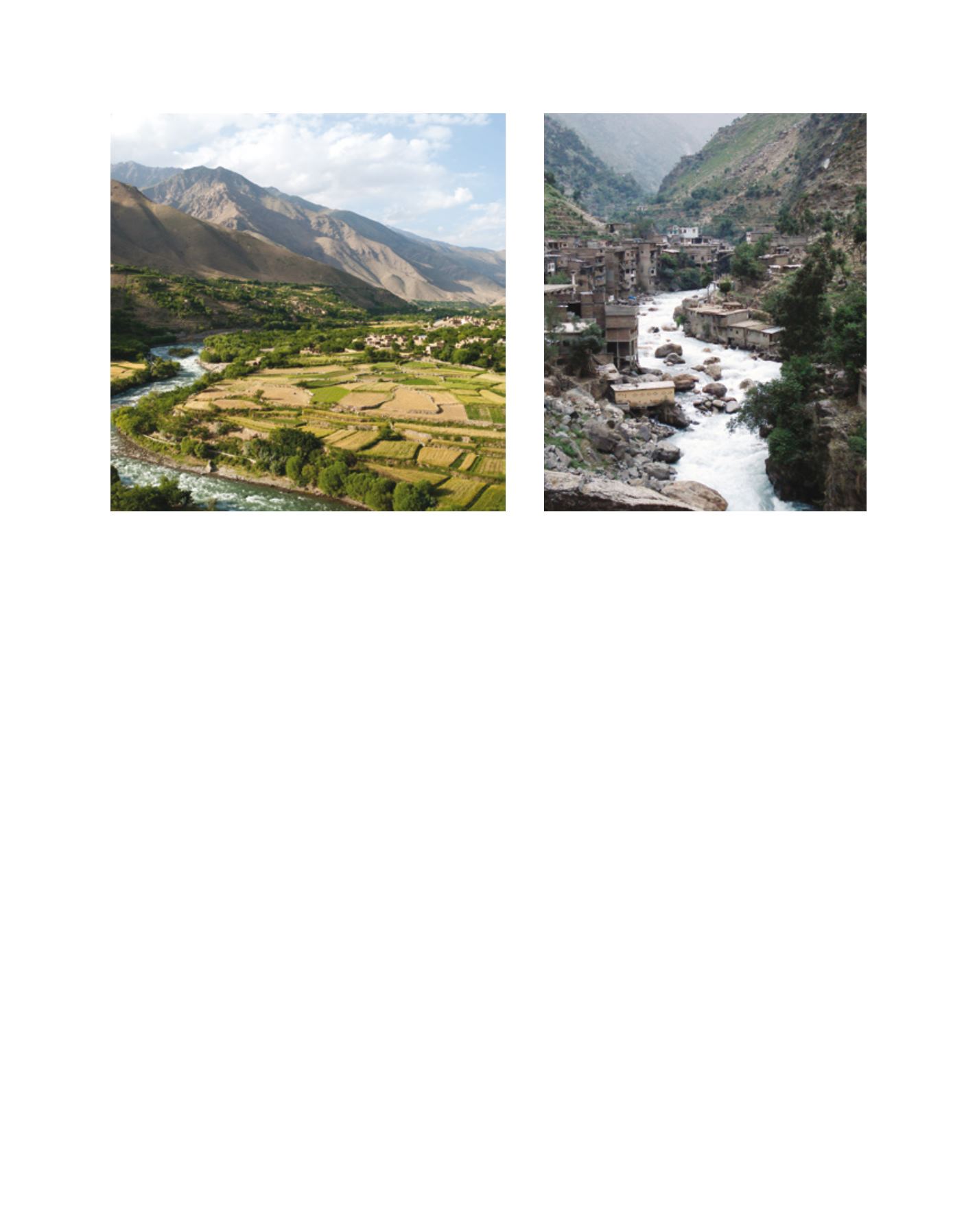

[
] 67
T
ransboundary
W
ater
M
anagement
seasonal variability by the middle and end of the century respectively.
The recession of HKH glaciers is a matter of great concern, particu-
larly since the release of the IPCC’s Fourth Assessment Report (AR4)
in 2007. Several recent studies indicate that the rates of retreat are less
than those originally suggested by the AR4, but across the region more
glaciers show shrinking trends than advancing trends.
The region is also undergoing remarkable socioeconomic trans-
formation. Consequently water demand has increased over the past
decades and will continue to increase into the future. For example,
the International Water Management Institute projects that in South
Asia the annual water withdrawals for agriculture will increase by
9 per cent between 2000 and 2050, while non-agricultural water
use will increase by a factor of five in the same period under an
optimistic ‘comprehensive assessment’ scenario. Such a dramatic
increase, coupled with environmental and socioeconomic changes,
gives reason for major concern about the availability of an adequate
quantity and quality of water to meet the demand.
Water vulnerability is uneven across the region. The Amu Darya and
Indus river basins appear to be the most vulnerable to changes in water
availability. Furthermore, water vulnerability has different causes; one
study showed that vulnerability in India and Bangladesh stems from
hydrological and ecological factors, while in Nepal it is linked more
to poverty and lack of economic development. Poor political govern-
ance and underinvestment in the water sector add to vulnerability in
Bangladesh and Nepal. Overall, Bangladesh was found to be the most
vulnerable country, and Nepal that with the least capacity to adapt.
The changing HKH waterscape amply illustrates that the manage-
ment challenges of today and tomorrow greatly differ from those of
the past. Resource utilization today is vastly expanded and intensified
through new technology, emerging markets and systems of govern-
ance, with decisions in one place influencing people and resources
elsewhere. Thus there is a strong case for interaction and reconcilia-
tion of the interests of the various actors in the region. A
more focused cooperative approach will entail a shift in
the water resource development paradigm from ‘develop-
ment only’ to ‘cooperative development and management’
in addressing water needs.
To date, water resource management approaches
in the HKH river basins have not fully accounted for
the social, cultural and political implications of water
management and climate change adaptation interven-
tions. Water management has traditionally been handled
at the state level, denying the transboundary nature of
the resource endowment and the need to accommodate
the interests of many actors, especially in addressing
challenges extending beyond stringent political bounda-
ries. The rigid hierarchical management regimes do not
support flexible, cooperative approaches for coping with
the ever-changing environmental and sociopolitical
landscape, especially changes related to transboundary
waters and climate change. Furthermore, such regimes
are not effective for meeting local or regional needs. The
highly regulated data and information sharing proto-
cols are counterproductive to good governance and fail
to support informed decision-making. Lack of coop-
eration in information exchange and in the sharing of
appropriate technology seriously hinders water resource
development and management in the region.
The ecological and sociopolitical issues related to water
management in the region are complex and do not easily
lend themselves to agreement and collaboration among
countries. A case in point is ‘green’ hydropower devel-
opment. The hydropower potential of the HKH region
is estimated to be more than 500 GW, much of which
Panjshir Valley, Afghanistan: water management has traditionally been handled at
state level, denying the transboundary nature of the resource
Settlements along the Indus river: river basins have been sources of
great civilizations and routes of sociocultural movement
Image: Alex Treadway
Image: Birendra Bajracharya


















